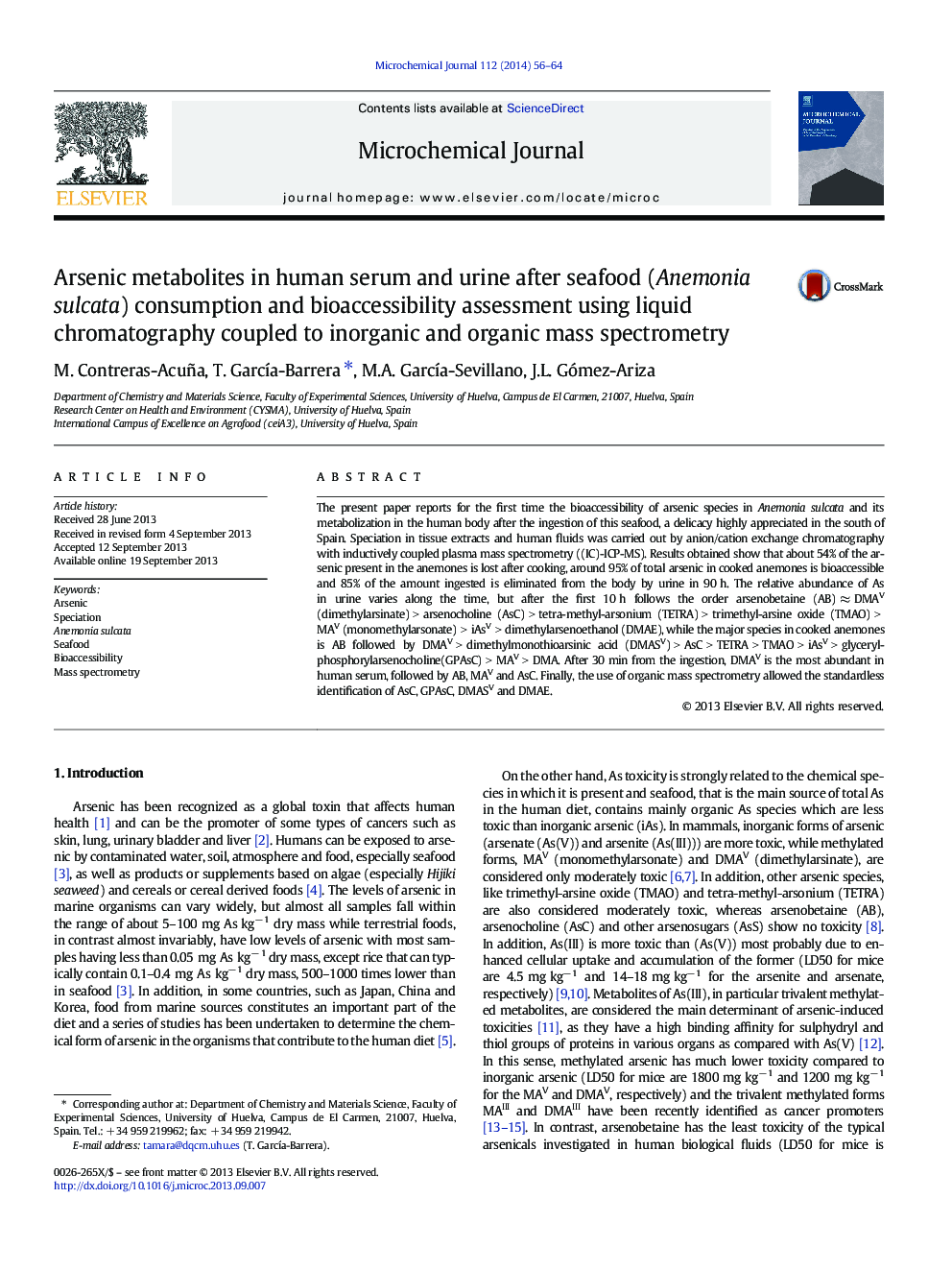| کد مقاله | کد نشریه | سال انتشار | مقاله انگلیسی | نسخه تمام متن |
|---|---|---|---|---|
| 7643331 | 1494882 | 2014 | 9 صفحه PDF | دانلود رایگان |
عنوان انگلیسی مقاله ISI
Arsenic metabolites in human serum and urine after seafood (Anemonia sulcata) consumption and bioaccessibility assessment using liquid chromatography coupled to inorganic and organic mass spectrometry
دانلود مقاله + سفارش ترجمه
دانلود مقاله ISI انگلیسی
رایگان برای ایرانیان
کلمات کلیدی
موضوعات مرتبط
مهندسی و علوم پایه
شیمی
شیمی آنالیزی یا شیمی تجزیه
پیش نمایش صفحه اول مقاله

چکیده انگلیسی
The present paper reports for the first time the bioaccessibility of arsenic species in Anemonia sulcata and its metabolization in the human body after the ingestion of this seafood, a delicacy highly appreciated in the south of Spain. Speciation in tissue extracts and human fluids was carried out by anion/cation exchange chromatography with inductively coupled plasma mass spectrometry ((IC)-ICP-MS). Results obtained show that about 54% of the arsenic present in the anemones is lost after cooking, around 95% of total arsenic in cooked anemones is bioaccessible and 85% of the amount ingested is eliminated from the body by urine in 90 h. The relative abundance of As in urine varies along the time, but after the first 10 h follows the order arsenobetaine (AB) â DMAV (dimethylarsinate) > arsenocholine (AsC) > tetra-methyl-arsonium (TETRA) > trimethyl-arsine oxide (TMAO) > MAV (monomethylarsonate) > iAsV > dimethylarsenoethanol (DMAE), while the major species in cooked anemones is AB followed by DMAV > dimethylmonothioarsinic acid (DMASV) > AsC > TETRA > TMAO > iAsV > glycerylphosphorylarsenocholine(GPAsC) > MAV > DMA. After 30 min from the ingestion, DMAV is the most abundant in human serum, followed by AB, MAV and AsC. Finally, the use of organic mass spectrometry allowed the standardless identification of AsC, GPAsC, DMASV and DMAE.
ناشر
Database: Elsevier - ScienceDirect (ساینس دایرکت)
Journal: Microchemical Journal - Volume 112, January 2014, Pages 56-64
Journal: Microchemical Journal - Volume 112, January 2014, Pages 56-64
نویسندگان
M. Contreras-Acuña, T. GarcÃa-Barrera, M.A. GarcÃa-Sevillano, J.L. Gómez-Ariza,